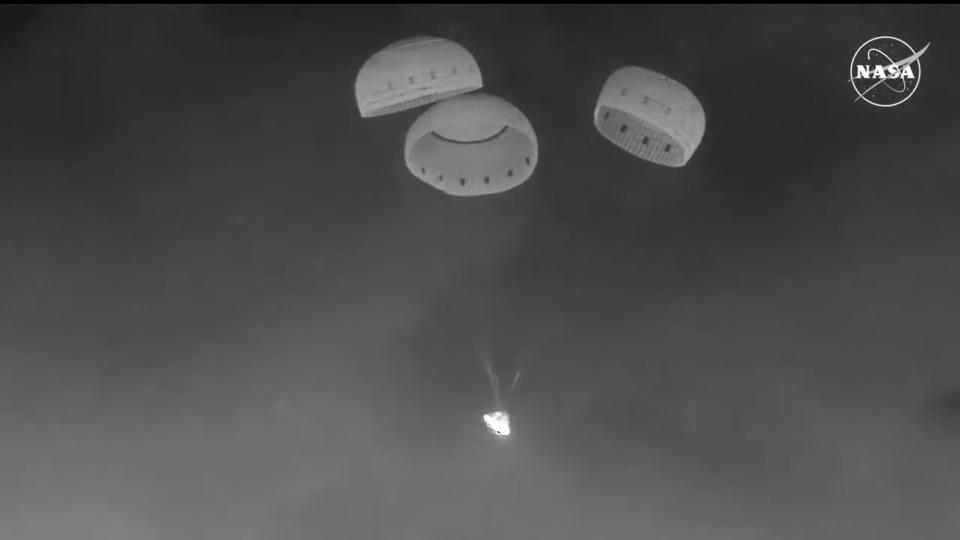When you buy through links on our articles, Future and its syndication partners may earn a commission.


Nearly two months after Boeing’s Starliner returned to Earth without its astronauts, NASA is still working on the issues that complicated the spacecraft’s first crewed test flight, agency officials said on Friday (Oct. 25).
Starliner’s Crew Flight Test (CFT) concluded on Sept. 6, with the capsule touching down in New Mexico autonomously. NASA astronauts Butch Wilmore and Suni Williams were supposed to be on board, but Starliner’s propulsion issues made a crewed return to Earth too risky, the agency has said.
Boeing is supposed to fly half a dozen future astronaut missions to the International Space Station (ISS) before 2030. But NASA officials told reporters on Friday that it could be a while before Starliner’s path is established.
“We’re just starting that — just trying to understand how to correct and rectify the issues that are on the table,” said Richard Jones, deputy program manager of the NASA’s Commercial Crew Program at Johnson Space Center (JSC) in Houston. “The schedules associated with how long, and what will be required in that area, [are] in front of us, and we’ll be working hard on that to know.”
Jones delivered the update about Starliner at the post-splashdown press conference for SpaceX’s Crew-8, which was the eighth operational astronaut mission that the California-based company has flown to the ISS for NASA. SpaceX’s Crew Dragon, which ferries astronaut crews, is based on the Dragon cargo spacecraft that first flew to space in 2012.
Related: When will Boeing’s Starliner fly astronauts again? NASA still doesn’t know
Boeing didn’t have a cargo craft to base Starliner on, so that capsule’s development was more involved. Uncrewed missions to the ISS 2019 and 2022 faced various thruster issues that NASA and Boeing thought were resolved before authorizing Wilmore and Williams, former U.S. Navy test pilots, to fly aboard CFT, the first test mission with astronauts.
CFT launched on June 5 and docked with the ISS the following day. But five of the 28 thrusters in Starliner’s reaction control system misbehaved during the capsule’s chasedown of the orbiting lab, delaying the arrival.
Boeing and NASA investigated the thruster issues for several months, pushing Starliner’s departure from the ISS back repeatedly. But they were not able to pinpoint the root cause and devise a remedy before sending the capsule back to Earth.
RELATED STORIES:
— When will Boeing’s Starliner fly astronauts again? NASA still doesn’t know
— Boeing’s 1st crewed Starliner to return to Earth without astronauts on Sept. 6
— ‘There was some tension in the room’, NASA says of decision to bring Boeing’s Starliner spacecraft home without astronauts
The CFT astronauts were thus reassigned to Crew-9’s Crew Dragon for their flight home, which is expected to be in February 2025. That means Wilmore and Williams, both veteran ISS astronauts before this mission, will spend about eight months in space rather than the 10 days, CFT’s original expected duration.
NASA, however, temporarily pulled from a four-month reserve of food, water, clothing and other resources on the ISS to keep the duo supplied — and topped that reserve up with goods brought up on robotic resupply ships. Wilmore and Williams pivoted to ISS duties, and, as other astronauts departed, their accelerated drawdown on the space station supplies stopped happening. Perhaps the biggest operational change was to Crew-9 itself, which launched with only two astronauts instead of the expected four to make room for the CFT duo.
CFT was always tagged as a developmental mission, meaning that timelines were uncertain given the spacecraft has not been fully certified for astronauts. The first operational mission, Starliner-1, is supposed to go forward in 2025; that said, the timeline, and the three assigned astronauts, may change as Starliner’s future becomes clearer.
